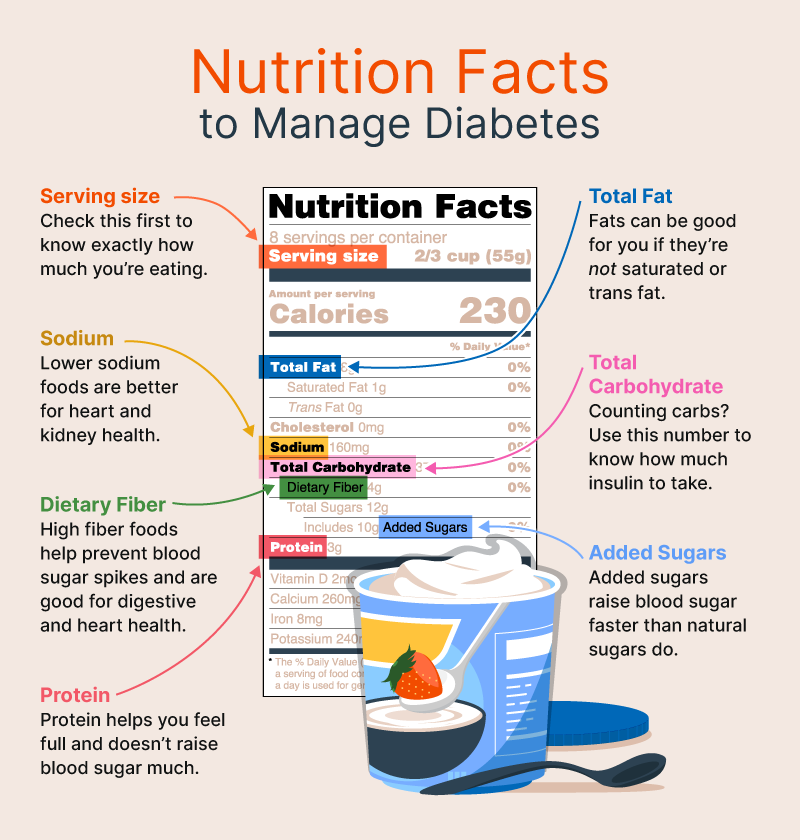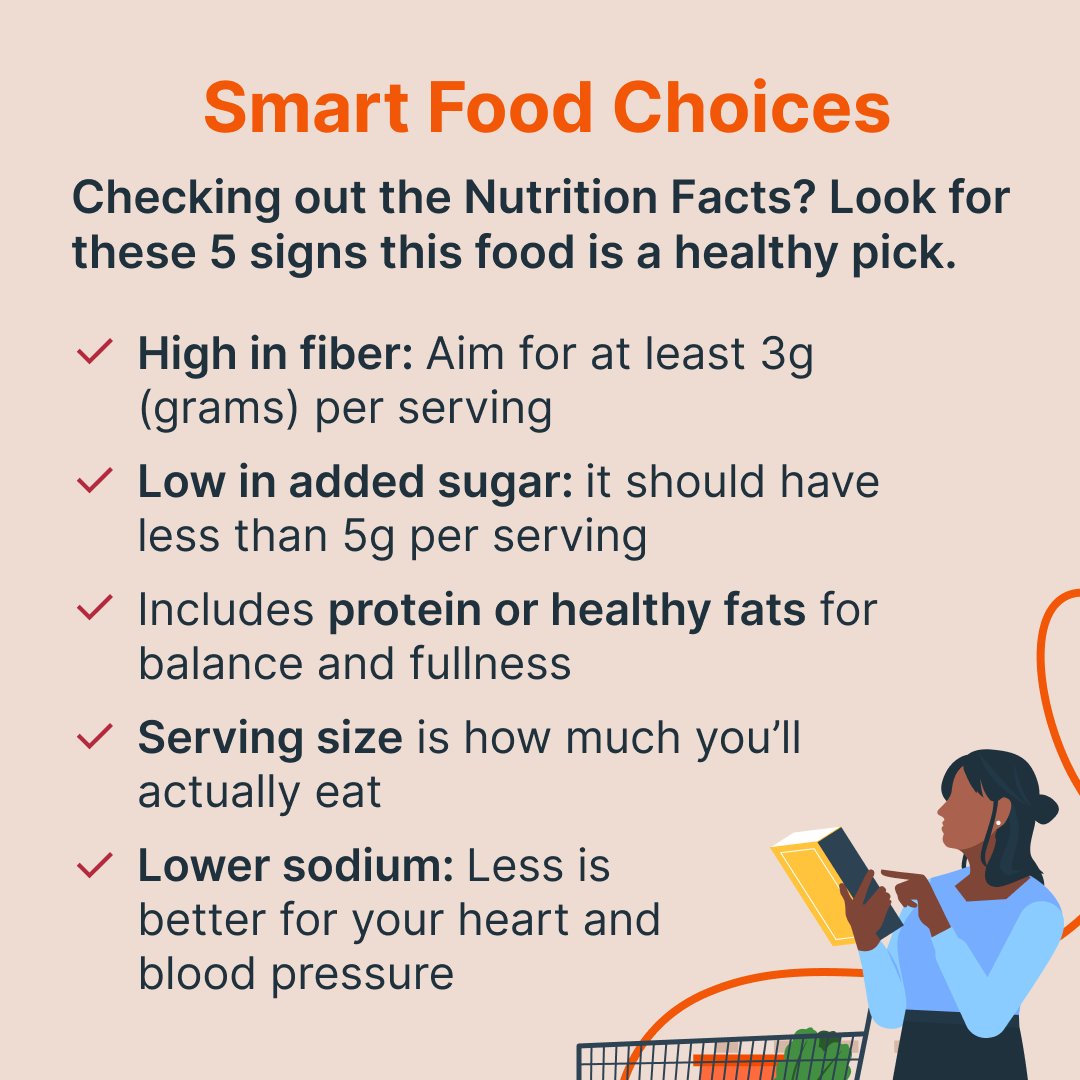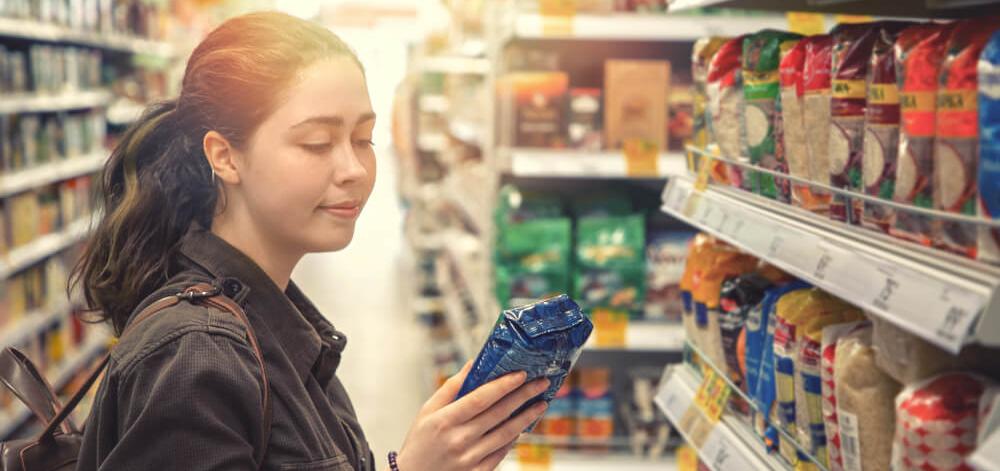Reading Food Labels for Diabetes Management
Learning to read food labels can help you manage diabetes. Knowing exactly what’s in your food can allow you to make smart choices, plan balanced meals, and keep your blood sugar stable. It can also help you know the correct dose for insulin, if you use it.
Some terms on food packages, like "low fat" or "reduced sugar," are regulated. But others, like "net carbs,” aren’t, and they can be misleading. Instead of trusting what’s on the front of the package, use the Nutrition Facts and ingredients list to see what’s really inside.
Here are tips for reading the Nutrition Facts label for managing diabetes. Understanding this valuable tool will give you greater control over what you eat each day.
Note: Nutrition labels are based on a 2,000-calorie diet for adults. Kids and teens may need more or fewer calories depending on their age, size, and activity level. For guidance, talk to your healthcare provider, diabetes nurse, or dietitian.

Serving Size
The first thing to check is the serving size. All the numbers on the label — like calories, carbs, and fat — are based on this amount. But the serving size listed isn’t always the same as what you actually eat. For example, if the label says 1/3 cup of rice is one serving but you eat a full cup, you’ll need to multiply those other numbers by three.
Total Fat
This section shows all the fat in one serving — both healthy and unhealthy fats are included. Try to limit saturated and trans fats (found in fried foods, fatty meats, and butter) because they can raise your risk of heart disease and cause blood sugar to rise later, especially after high-fat meals like pizza.
Healthy fats, like those from nuts, seeds, avocados, and olive oil, help you feel full and support heart health. They don’t spike your blood sugar quickly.
To check how much fat is healthy, subtract saturated and trans fats from the total fat. A low-fat meal has less than 3 grams of total fat per serving.
Sodium
It’s important to watch sodium (salt) when you have diabetes. The FDA’s Dietary Guidelines for Americans recommends adults eat no more than 2,300 mg (milligrams) of sodium a day (about 1 teaspoon of salt).For kids, the recommended limit is 1,200 to 1,800 mg of sodium per day, depending on their age. If you have high blood pressure or kidney disease, your doctor may recommend you reduce this further.
Packaged and prepared foods can contribute over 70% of our dietary sodium. For example, a single slice of Italian sausage pizza can contain up to 740 mg of sodium. Using the food label to see how much sodium is in your food can help you find and choose lower-sodium items.
Total Carbohydrate
This is the most important part of the label when it comes to insulin dosing. The number listed for “Total Carbohydrate” is a total of all the carbs in the food, including sugars, starches, and fiber. Use this total number to figure out how much insulin to take.
If a serving has more than 3–5 grams of fiber, you can subtract that from the total carbs. That’s because fiber slows down how quickly sugar enters your blood.
Total Sugars and Added Sugars
When counting carbs for insulin, the total carbohydrates number is what matters most. This includes both natural and added sugars.
Natural sugars, like the kind in fruit or milk, often come with fiber or other nutrients that slow things down. Added sugars are any extra sugar that was put into the food. Added sugars can raise blood sugar faster because they don’t come with fiber.
The American Heart Association (AHA) recommends a limit of 25 grams of added sugar per day for women and 36 grams per men.
What About Artificial Sweeteners (Sugar Alcohols)?
Sugar alcohols — like xylitol or erythritol — are included in the ingredients like These artificial sweeteners usually don’t raise blood sugar as much as regular sugar. But they can affect people differently. If you eat a lot of food with artificial sweetener, check your blood sugar to see how your body reacts.
Protein
Protein is an important part of a healthy diet. It maintains muscle, helps heal wounds, gives you energy, and helps you stay full. The USDA Dietary Guidelines recommend most adults eat 5 to 7 ounces of protein-rich food each day. (Exactly how much you should eat depends on your sex, age, and other factors.) Your protein needs may change based on activity, muscle mass, gender, or health conditions like kidney disease. To find what’s right for you, ask your doctor or dietitian.
% Daily Value
The Percent Daily Value (%DV) shows how much of each nutrient is in one serving, based on a 2,000-calorie diet. It helps you see if a food is high or low in something like sodium, fiber, or fat.
But % Daily Value is just a general guide — it doesn’t reflect your personal health needs. When you have diabetes or another health condition, you should talk to your care team to find the amounts that are right for you.

Want to Read More?
Access all of Dario Connect’s content, community, and experts for free!
Already a member? Login
Want to Read More?
Access all of Dario Connect’s content, community, and experts for free!
sign UP For FreeAlready a member? Login


